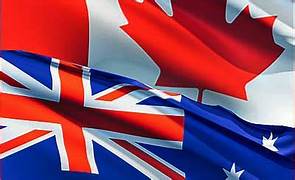
Australia and Canada both operate universal healthcare systems designed to provide essential health services to all citizens. However, private health insurance still plays a notable role in both countries—though in very different ways. Understanding the function, impact, and limitations of private insurance in these two systems reveals important lessons about balancing equity, access, and patient choice in publicly funded healthcare.
Australia: A Dual Public-Private Model
Australia’s healthcare system is built on a dual public-private model, where Medicare, the public health system, covers the majority of hospital and medical services. However, private health insurance is actively encouraged through government incentives like tax rebates, lifetime health cover loading, and the Medicare Levy Surcharge (an additional tax on high-income earners without private cover).
What Private Insurance Covers in Australia
Private health insurance in Australia provides access to:
- Private hospital accommodation and the ability to choose your own doctor
- Shorter wait times for elective surgeries
- Services not covered by Medicare, including dental, optical, physiotherapy, and some ambulance costs
This optional but incentivized system creates pressure relief for the public sector while offering patients more choice and faster access in non-urgent situations. Importantly, private health insurers in Australia cannot cover services already subsidized by Medicare on the public side—preserving the integrity of universal coverage.
Canada: Limited Role for Private Insurance
Canada’s approach is fundamentally different. Its universal healthcare system, also called Medicare, is publicly funded and provincially managed. It covers nearly all medically necessary hospital and physician services, and private insurance is not allowed to duplicate those services. As a result, Canada’s private insurance sector is limited to non-core services, such as:
- Prescription drugs (outside of hospitals)
- Dental and vision care
- Private or semi-private hospital rooms
- Paramedical services like physiotherapy and chiropractic care
Since private duplicative insurance is prohibited under the Canada Health Act, Canadians cannot pay for faster access to services already covered publicly. This protects equity in access but leaves patients with longer wait times for certain procedures, especially elective surgeries.
Key Lessons from the Two Systems
1. Access vs. Equity
Australia’s model shows that private insurance can coexist with universal healthcare, offering choice and shorter wait times without undermining the public system—if properly regulated. However, it can also create a two-tiered system, where those who can afford private cover enjoy faster services.
Canada’s model, in contrast, prioritizes equity over speed, ensuring that all citizens access medically necessary care without regard to income. But without a private outlet, this can lead to frustration with long wait times, especially in under-resourced provinces.
2. Government Incentives Matter
Australia’s government actively encourages private insurance to reduce strain on the public system, using financial incentives and tax penalties. Canada’s more hands-off approach leaves most supplemental coverage to employer-provided insurance, with no national strategy to integrate private plans into healthcare planning.
Conclusion
Private health insurance plays a supporting role in both Australia and Canada, but the scope, regulation, and impact differ greatly. Australia shows how a regulated private sector can enhance patient choice and access without eroding universal care. Canada demonstrates the value of strict separation between public and private care in maintaining equality. As both nations face healthcare system pressures, understanding these dynamics offers valuable insight into how to build balanced and resilient models for the future.








